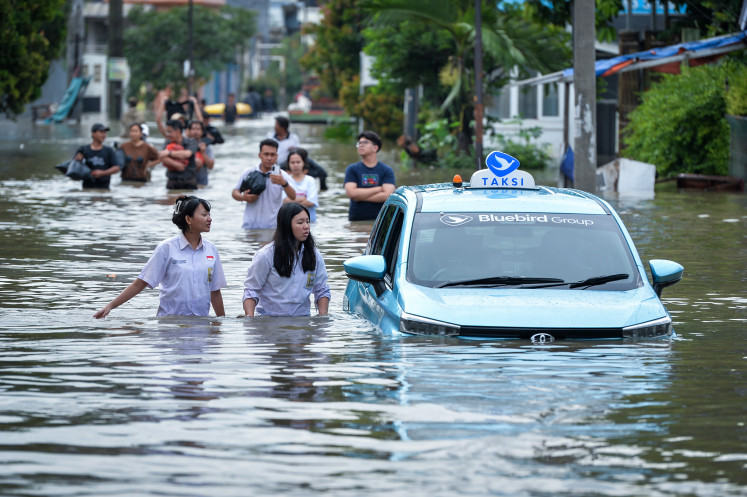Popular Reads
Top Results
Can't find what you're looking for?
View all search resultsPopular Reads
Top Results
Can't find what you're looking for?
View all search resultsExxon plans to pull out of Gunting oil block
US-based oil and gas giant ExxonMobil is considering pulling out of an oil and gas project in East Java following an unresolved dispute with locals
Change text size
Gift Premium Articles
to Anyone
U
S-based oil and gas giant ExxonMobil is considering pulling out of an oil and gas project in East Java following an unresolved dispute with locals.
“Exxon plans to pull out from the Gunting block. They don’t want to continue the project because each time the company installs its seismic cable it is cut by locals,” upstream oil and gas regulator BPMigas chairman R. Priyono told lawmakers during a hearing last week.
Exxon’s Indonesian operations spokesman, Maman Budiman, confirmed the statement, but declined to provide further details.
“[The story about the pull out plan] is true, but we cannot comment since we are still discussing this matter with BPMigas,” Maman said.
The Gunting block was secured by Exxon subsidiary Esso Exploration Int. Ltd in a government oil and gas block auction in 2008.
The company pledged a US$17 million investment commitment for the first three years of exploration.
But, this is unlikely to materialize as the company now planning to leave.
The Gunting block covers a 1,645 -square-kilometer area, overlapping several regencies including
Jombang, Mojokerto, Kediri and Nganjuk.
According to several local media reports, locals and NGOs have opposed seismic survey activities, saying such activities could damage locals’ houses and agriculture.
Pressure on Exxon has increased, as protesters referred to the disastrous mudflow in Sidoardjo regency, in the same province as the Gunting block, in their campaign against Exxon’s exploration project.
The mudflow has displaced thousands of people in the region since it started in May 2006, after PT Lapindo Brantas had been drilling in the area.
Priyono said BPMigas had asked Exxon to wait for the results of a dialogue with locals and the regional government.
Exxon has been engaged in oil and gas projects in Indonesia for many years. The company operates the PT Arun LNG plant, which was the first LNG plant in Indonesia. The Arun plant processes natural gas from Exxon’s Arun field in North Aceh.
BPMigas reported that as of Aug. 26, 2010, Exxon’s gas production was 571.09 million standard cubic feet per day (mmscfd), far higher than its initial target for 2010 — 199.73 mmscfd.
As for 2011, Exxon is expected to pump out 328 mmscfd of gas.
Currently, Exxon’s main operation in Indonesia is in the Cepu block, located on the border between of East and Central Java.
Indonesia high hopes in the Cepu block to increase its declining oil production.
Indonesia’s average oil production reached 935,292 barrel per day (bpd) in the first half of this year, less than the 965,000 bpd targeted in the revised 2010 state budget.
BPMigas said the oil production failed to reach the target because some oil fields had closed their
operations.
According to BPMigas, the Cepu block currently has the capacity to produce 25,000 bpd, but the regulator had set the its production target at only 20,000 because of a shortfall in the receiving capacity.
The crude from the block is supplied to refineries operated by PT Tri Wahana Universal (TWU) and state oil and gas company PT Pertamina. BPMigas says TWU could only receive between 3,000 and 6,000 bpd and Pertamina could only receive between 10,000 and 12,000 bpd.
Oil and gas director general Evita Herawati Legowo said problems often occurred at TWU’s facility, which sometimes cannot meet its capacity of 6,000 bpd.
“They say the crude supplied is different to the crude specified for their refinery. The government has formed a team to conduct a technology audit of the TWU’s facility,” Evita said.
BPMigas said Pertamina had proposed to develop a new receiving facility, but the project would take 18 months to complete.










